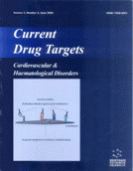Abstract
Peripheral arterial disease is a common disease in adults and its complications take a great toll in terms of quality of life and treatment costs. As healthcare budgets have taken up more of the economy, and as employers and patients have become concerned about the escalating costs of healthcare, we have entered an era in which individual doctors must become concerned about the costs of a service relative to its benefits. The purpose of this article is to review the literature on the pharmacoeconomics of the diagnostic and therapeutic procedures for peripheral arterial disease. It emerges that peripheral arterial disease places a great burden on healthcare systems and on society as a whole. Some of these costs, including indirect and intangible costs (i.e. those related to lost productivity, and reduced quality of life, respectively) could be reduced if the condition were to be recognized and correctly treated at an early stage.
Keywords: Peripheral Arterial Disease, Socioeconomic Impact, pharmacoeconomics, intangible costs
 6
6













